A retrospective analysis of 140 patients with giant cell tumor in the extremity: A multicenter study based on four hospitals in South China
2015-01-29 文章来源:南方医科大学南方医院 我要说
Author:Nan Jiang a, Cheng-he Qin a, Cai-xia Tan, Shi-feng Wen, Yun-fei Ma, Fu Dong, Xi-cai Diao,Peng Zhang, Bin Yu
1. Introduction
Giant cell tumor (GCT) of bone, also known as osteoclastoma, is composed of mononucleated cells and osteoclast-like giant cells. Thetumor is presented as a locally benign neoplasm, which favors the meta-epiphyseal region of long bones in the extremity. Although it isbenign, its biological behavior hasa malignant potential. Campanacciet al. classified GCTs into three grades (grade I to grade III) according totheirradiographic manifestations, ranging from latent, active to locally aggressiveforms.
The epidemiological characteristics of GCT are alsovariable. Take its incidences reportedas an example. Theincidence forAmerican population was about 5% to7% and 10.8% in Sweden and even ranged from6.3%to 20.3% to 30.3% in India. In addition, its sex ratio alsodiffers from country tocountry. A female predominance was reported in Americans while no sex predilection was observedin Italy and Sweden. In China, Sung et al. reported amaleto female ratio of1.26.
However, the epidemiological survey of Chinese GCT patientsby Sung et al. was 30 years ago. So far as we know, only onerecent report is available regardingepidemiological characteristics of extremity GCT in Chinese population. Therefore,it is necessary toconduct more surveys to update and deepen our knowledge about the currentepidemiological characteristics of extremity GCT in Chinese patients.
Theaim of this study was to investigate the current epidemiological characteristics ofextremity GCT in Chinese population and compare our findings with those reported by Niu et al.
2. Patients and methods
2.1. Study design
This study was designed as a retrospective analysis ofthe epidemiological characteristics of the patientswith definite extremity GCT.
.2.2. Data sources and search strategy
Patients’ data were collectedfrom four hospitals in Guangzhou, South China: NanfangHospital, the First Affiliated Hospital to Guangzhou University ofChinese Medicine (GUCM),Guangzhou First People’s Hospital and Zhujiang Hospital. Data search was performed using the medical electronic records in the four hospitals. Index term ‘‘giant cell tumor’’ andtime limit from January 1, 2001 to December 31, 2011 were set for search. After the initial patients’ recordswere retrieved, they were reviewedfor eligible assessment.
2.3. Inclusion andexclusion criteria
Eligible patientswere those with definite diagnosis of GCT in the extremitymade by the abovefour hospitals and with complete information from the medical records regarding gender,tumor site, age at the time of first diagnosis, local recurrence andpulmonary metastasis. Excludedfrom the present study were patients diagnosed with GCT in non-extremity bones (e.g. clavicle, scapula, spine, etc.) and those who had been suspected as patients with GCT but denied by the final pathological diagnosis and those who had insufficient information regardinggender, tumor site, age at the time of first diagnosis, local recurrence and pulmonary metastasis.
2.4. Analysis of data collected
We analyzed overallepidemiological data ofGCT to find the gender ratio, the mostlikely site, the peak age range and, in particular, the effects ofgender on tumor site, age at the time of first diagnosis, local recurrence and pulmonary metastasis. We further compared our findings with those reported byNiu’s study.
2.5. Statistical analysis
Statistical analysis was performedusing the SPSS 13.0 software(Chicago, Illinois). Continuous variables were expressed as the mean and standard deviation. Dichotomous variables were expressed as percentages. T-testwas performed to valuate the differences ofcontinuous variables between two genders. Chi square test was applied to assess the differences of dichotomous variables. A P value of <0.05 was consideredsignificant.
3.Results
3.1. Patient identification
A total of 225 patients were identified initially. After reviewing the records, wefinally included140 eligible patients for the present study. The identification and inclusionprocess was illustrated in Fig. 1.
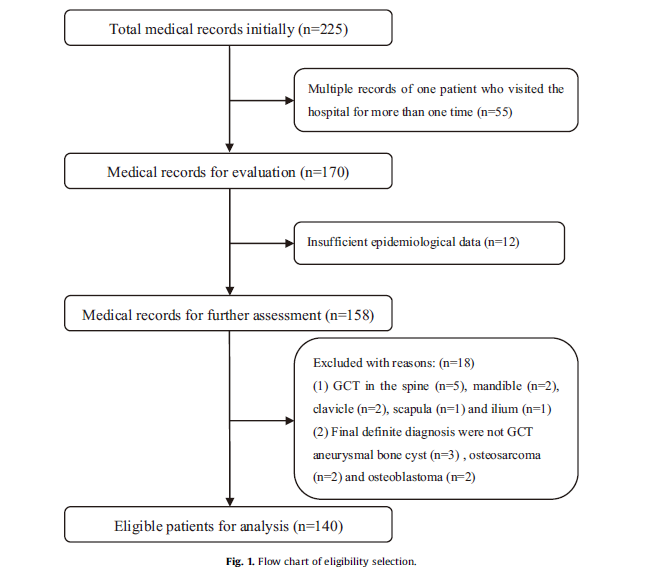
3.2. Findings of analysis
3.2.1. Gender ratio and primary tumorsite
Of the eligible 140 patients, 87 were male and 53 female, giving a gender ratio (male/female) of 1.64.
Asrevealed by Fig. 2, 45 tumors were located in the upper limb and75 tumors onleft side ofthe body. The top three tumor locations were the distal part of femur (33 cases), the proximal partof tibia (27 cases) and the distal part ofradius (25 cases). The top three tumor locationsfor male and female were listed in Table 1. Besides, a sum of67 tumors were around the knee (Table 2), accounting for 47.86%of all GCTs.
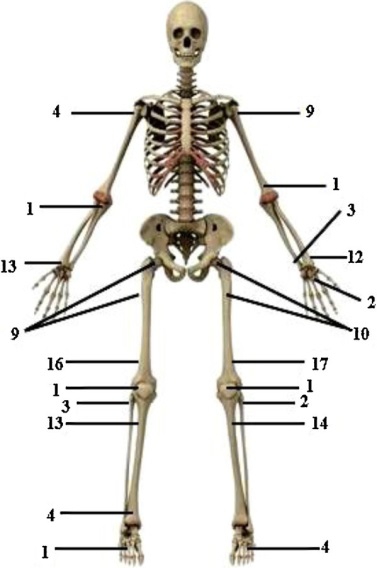
Fig. 2. Distribution ofthe primary GCTs.
3.2.2. Average age at first diagnosis
Asrevealed by Fig. 3 of age distribution, 92patients (65.71%) were in their 20s to 40s when they were first diagnosed with GCT. The overall average age at first diagnosis was 30.49 years. No significantdifference was identifiedbetween male and female in the averageageat the time of first diagnosis(P = 0.757) (Table 1).
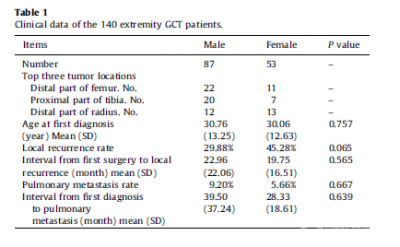

Fig. 3. Age distribution of all GCT patientsat the time of first diagnosis
3.2.3. GCT local recurrence
Altogether 50 patients (26 males and 24 females) had tumor local recurrence (Fig. 4). Tumors around the knee accountedfor the largestpart (42.0%). With respect to gender difference, no statistical difference was observed (P = 0.065). The mean interval from first surgeryto local recurrence was 21.42 months. Likewise, no significant difference was identified between male and female(P = 0.565) (Table 1).
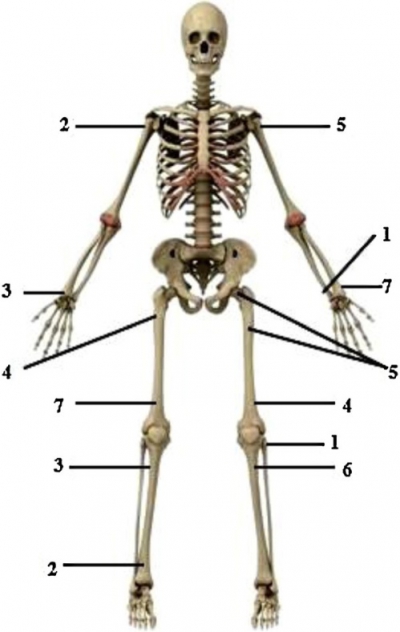
Fig. 4. Distribution of the locally recurredGCTs
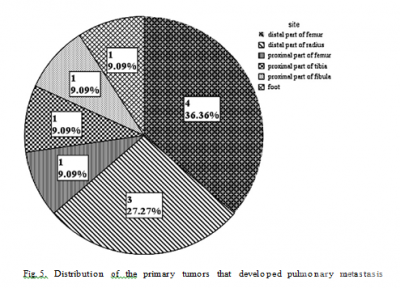
3.2.4. Pulmonary metastasis
Pulmonary metastasis was observedin11 patients (8 males and 3 females), showingno gender difference either (P = 0.667). Thedistribution of the 11 primary tumor locations was shown in Fig. 5. The mean intervalfrom first diagnosis to metastasis was 36.45months. Similarly, no statistical difference was observed between genders (P = 0.639) (Table 1).
3.3. Comparison with Niu’s study
Similarities between our findings and those reportedby Niu et al. can be identified ingender ratio, mean age at the time of first diagnosis, interval from first surgery to recurrence and interval from first diagnosis to pulmonarymetastasis (Table 2). However, significant differences were observed regardingGCT distribution inthe upper and lower limbs,local recurrence rate and pulmonary metastasis rate aswell (Table 2)

4. Discussion
Findings ofthecurrent study indicatethat GCT in the extremityin Chinese patients may have amalepredominance and frequently occur in an age range of 20–40 years old.Moreover,it favors thebonearound the knee. According to our findings, local recurrence may occur in a mean time of21.42months after the first surgery and pulmonary metastasis ina mean time of 36.45 months.
Withregard togender ratio, our finding was in accordance withprevious reports that extremity GCT in Chinese population showeda male predilection. Besides,our gender ratio is also close to those reportedby other studies on Asian patients which rangedfrom1.07 to 1.77 . The GCT gender ratio, however, showed afemale predominance in America (from 0.78 to 0.82) while no gender predilection was identified in Italy (0.94 to 0.97) and Sweden (1.04).
Although GCT can occur in nearly any human extremity bone (Fig. 2), the lower limb seems to be at a higher risk of tumor favor than the upper limb.With regard to the most frequent locations intotalGCT patients, ourfinding agreeswith Niu’s on the top two locations: distal part offemurand proximal part of tibia, but in Niu’s report theproximal part of femur ranked thethirdplace while the distal part of radius did in our study. It isinteresting that the top three GCT locations respectively for males, females and total GCT patients are the same, but thereis a difference inranking between malesand females (Table 1). The ranking ofthetop threes is the same for males and total patients, but the top threes rank the third,first and second respectively for females (Table 1). About half of the GCTs werelocated around the knee in the current study, which is similar to Gupta’s report. However, other studies reportedhigher percentages ofGCT around the knee, ranging from 57.3% to 66.02% .
We found that extremityGCT frequently occurred in an age range of 20–40 years old in Chinese population, which is similar toNiu’s study. Moreover, similarities were also identifiedbetween the two studiesin the average ages at first diagnosis for total, male and female patientsrespectively. In our study, the youngest patient was a6-year-oldgirl, with tumor inthe rightproximal part of fibula whilethe oldest patientwas an 85-year-oldmale,with tumor inthe right proximalpart of humerus.
The local recurrence rate of GCT for overall patients was 35.71%,significantly higher than the figure (12.37%) reported by Niu et al. (Table 2). There is a great difference in the local recurrence rate of GCT reported, rangingfrom 11.1% to 49%. Someauthors indicated that the local recurrence rate was dependent on tumor site. In our study, locally recurring GCT were mostly located aroundthe knee (42.0%), followed bythe
distalpart of radius, the proximal part offemur and humerus. Vander et al. stated that GCTs in the distal radius wereparticularly aggressive. Thelocal recurrence reported of GCTs in the distal radiusby other studies ranged from 20% to 88.9% and was 40% in the present study. Female patientsseemed to have a much higher localrecurrencerate than male patients (45.28% versus 29.88%),but nostatisticaldifference was found (P = 0.065). Therefore, amuchlarger sample size is needed to elucidate whether there is a gender difference in this point. Besides, no significant difference was observed in the average interval from first surgery to local recurrence between genders, with a median of15 months (range, 3–84 months)for the total patients (Table 1).
With respectto pulmonary metastasis, a total of eleven patientswerefound in our study, yielding arate(7.86%) significantly higher than Niu’s (3.38%).Other pulmonary metastasis rates, from about 4% to 5%, were reported . Some authors stated that local recurrence increased the risk of pulmonary metastasis, but only four patients (2 males and 2females) were found tohave simultaneous local recurrence and pulmonary metastasis in our investigation. The male patientsseemed to have a higher metastasis risk and a longermean interval from first diagnosis to metastasis than the femalepatients though no statistical differences were observed (Table 1). The most frequenttumor site that developed pulmonarymetastasis was the distalpartof femur, followed by the distal part ofradius (Fig. 5). Some authors pointed out that the pulmonary metastasis was benign in nature and led to satisfactory survival, but wefound aGCT patient with pulmonarymetastasis who died of respiratoryfailure justbecauseof extensive metastasized tumors in both lungs. Similarly,one study alsoreported a fatal lung metastasis in an 8-year-old child secondaryto index finger GCT. Therefore, we conclude that pulmonary metastasis secondary to GCT should be treated cautiously because it may not necessarily have fine prognosis.
Variousepidemiological features of bone GCT have been reported. We believe thatthree main factors may account for GCT epidemiological variance. Firstly, different racesand areas may resultin different features. Secondly, surgical procedures (curettage, extensive curettage and resection) may affect the outcome, especiallythe recurrence rate.Thirdly, different sample sizes mayalso have asignificant role in the epidemiological variance. Therefore, investigations with a very large sample sizein different areas and races should be conducted to enable usto have clearand exact understanding of the epidemiologicalprofile of extremity GCT worldwide.
Thefirstmain limitation ofthepresent study is that we failed to sort the patients by surgical procedures to investigate therelationship between local recurrence and surgicalprocedures because of incomplete data from the medical records available. Secondly, although our study was based onthe medicalrecords from four hospitals, the sample size was still very limited.
In summary, our epidemiological survey provides medical professionals staff with useful information about the gender ratio,peakoccurrence age, frequent locations and averageintervals between first surgeryand local recurrence and pulmonary metastasis in Chinese GCT patients. The information may helpthe GCT therapy in some way. For instance, follow-ups for GCT patients should becarried onfor at least 3 years after primarysurgery according to the averageintervals for possible localrecurrence and pulmonary metastasis in our study.
参考文献(略)





 京公网安备11010502051256号
京公网安备11010502051256号